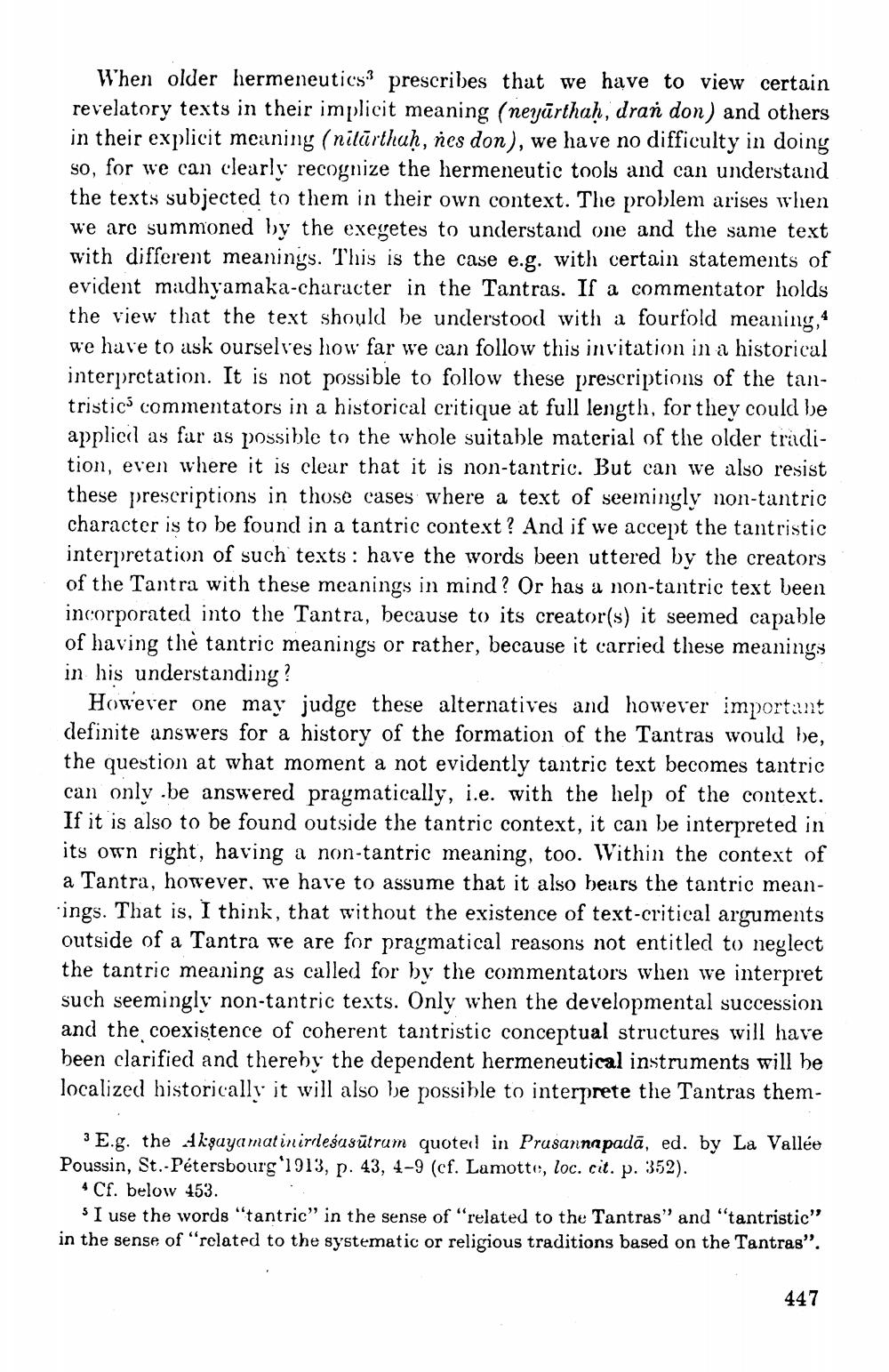Book Title: Remarks On Trantristic Hermeneutics Author(s): Ernst Steinkellner Publisher: Ernst Steinkellner View full book textPage 3
________________ When older hermeneutics prescribes that we have to view certain revelatory texts in their implicit meaning (neyūrthaḥ, dran don) and others in their explicit meaning (nitūrthuḥ, nes don), we have no difficulty in doing so, for we can clearly recognize the hermeneutic tools and can understand the texts subjected to them in their own context. The problem arises when we are summoned by the exegetes to understand one and the same text with different meaninys. This is the case e.g. with certain statements of evident madhyamaka-character in the Tantras. If a commentator holds the view that the text should be understood with a fourfold meaning, 4 we have to ask ourselves how far we can follow this invitation in a historical interpretation. It is not possible to follow these prescriptions of the tantristico commentators in a historical critique at full length, for they could be applicol as far as possible to the whole suitable material of the older tradition, even where it is clear that it is non-tantric. But can we also resist these prescriptions in those cases where a text of seemingly non-tantric character is to be found in a tantric context ? And if we accept the tantristic interpretation of such texts : have the words been uttered by the creators of the Tantra with these meanings in mind? Or has a non-tantric text been incorporated into the Tantra, because to its creator(s) it seemed capable of having the tantric meanings or rather, because it carried these meanings in his understanding? However one may judge these alternatives and however important definite answers for a history of the formation of the Tantras would be, the question at what moment a not evidently tantric text becomes tantric can only .be answered pragmatically, i.e. with the help of the context. If it is also to be found outside the tantric context, it can be interpreted in its own right, having a non-tantric meaning, too. Within the context of a Tantra, however, we have to assume that it also hears the tantric meanings. That is, I think, that without the existence of text-critical arguments outside of a Tantra we are for pragmatical reasons not entitled to neglect the tantric meaning as called for by the commentators when we interpret such seemingly non-tantric texts. Only when the developmental succession and the coexistence of coherent tantristic conceptual structures will have been clarified and thereby the dependent hermeneutical instruments will be localized historically it will also be possible to interprete the Tantras them 3 E.g. the Akşayamatinirrlesasūtrum quoted in Prusannapadā, ed. by La Vallée Poussin, St.-Pétersbourg'1913, p. 43, 4-9 (cf. Lamotte, loc. cit. p. 352). - Cf. below 453. s I use the words "tantric" in the sense of "related to the Tantras" and "tantristic" in the sense of "related to the systematic or religious traditions based on the Tantras". 447Page Navigation
1 2 3 4 5 6 7 8 9 10 11 12 13 14
